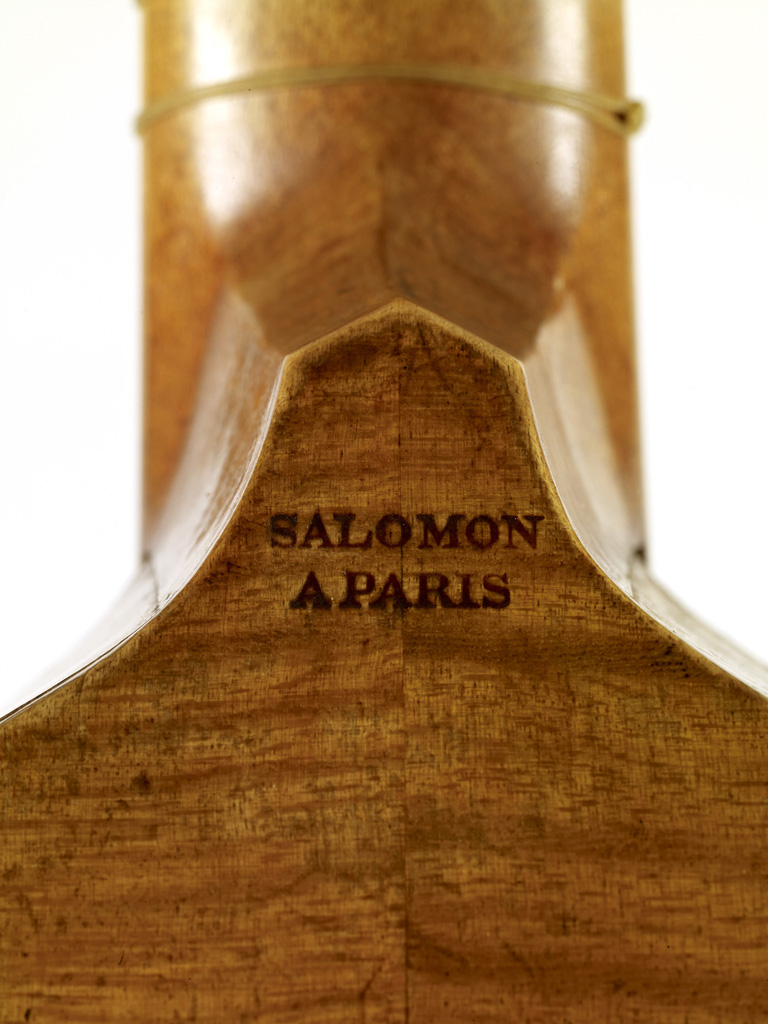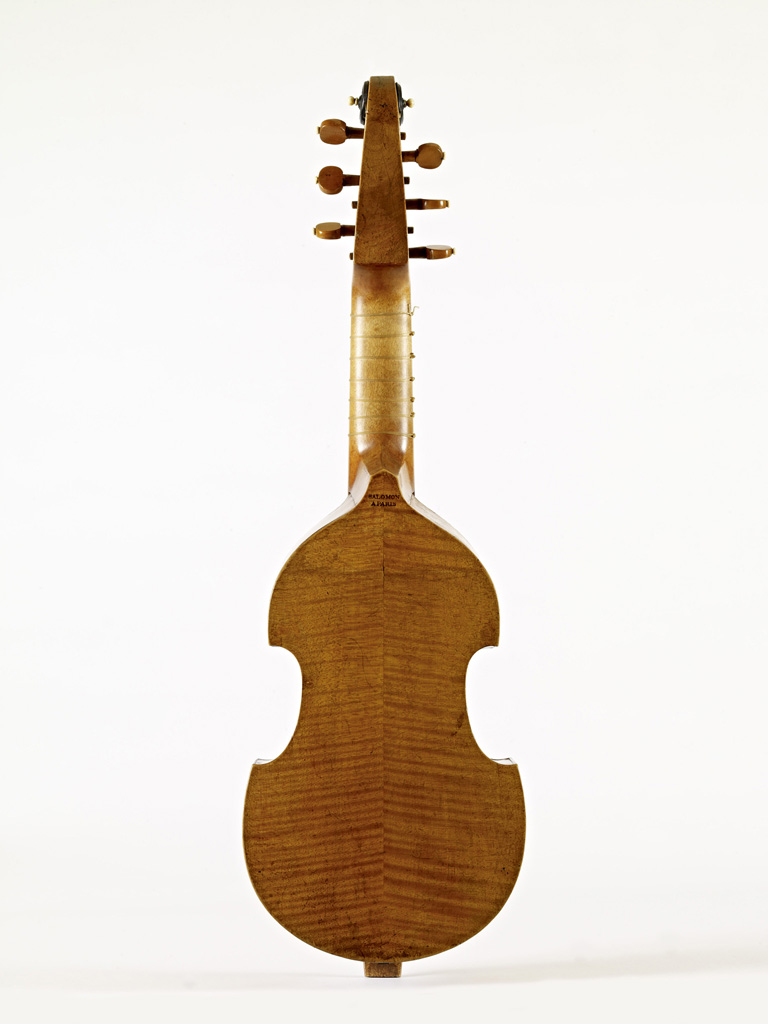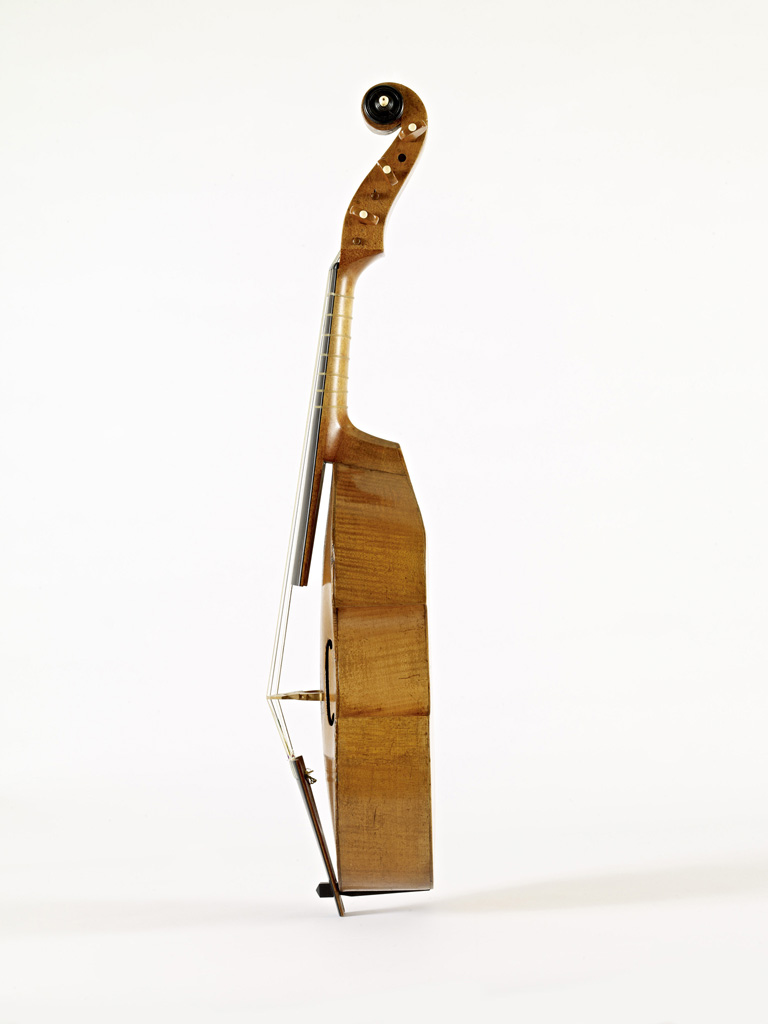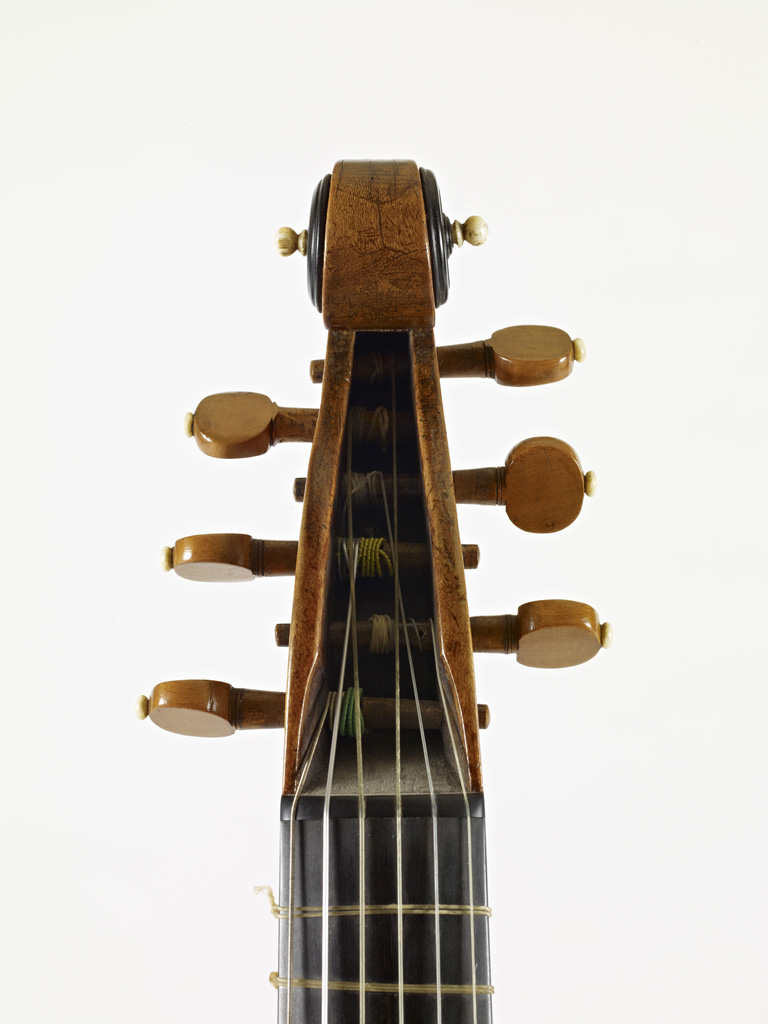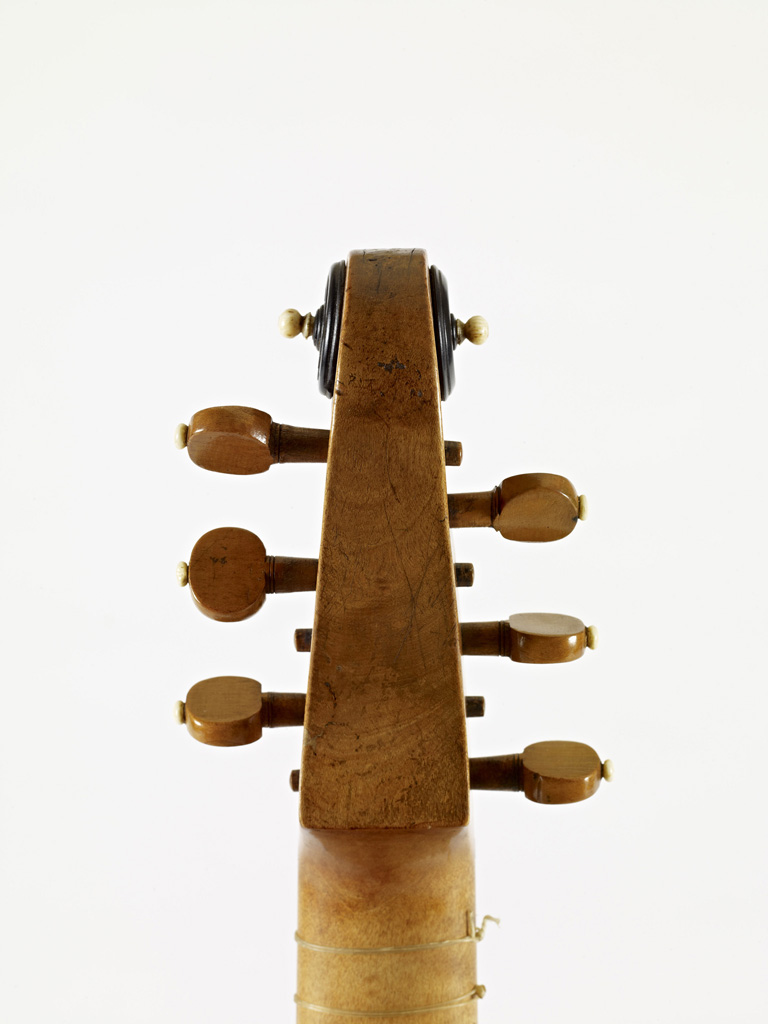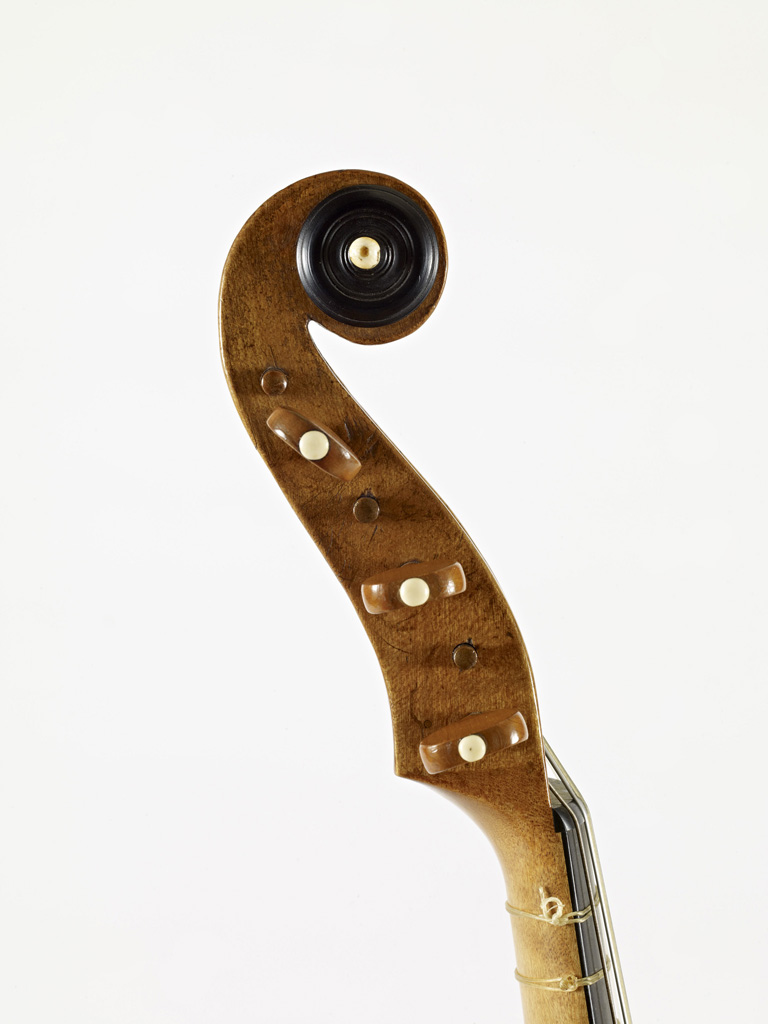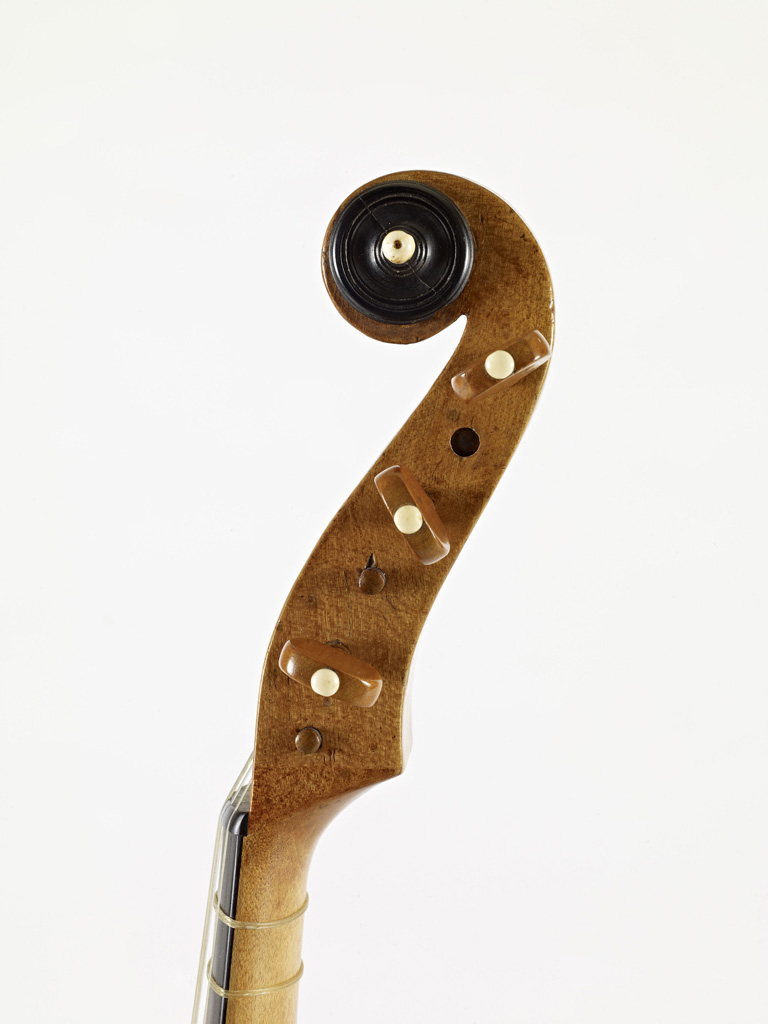Jean-Baptiste Dehaye was born in 1713 in Reims, where his father was a violin maker and presumably his teacher; Salomon is the trade name with which he signed his instruments, either on paper labels inside or branded on the exterior, typically at the top of the back. In 1735 he married Catherine de Rodé and soon thereafter moved to Paris, but the existence of instruments dating from 1744 to as late as 1773 and signed “Fait à Reims, par Salomon” (in contrast to his own mark, “Salomon à Paris”) suggests that another member of the family younger than his father, perhaps a brother, remained active in their home town, using the same trade name.
In 1748, a few months after the death of his wife, Jean-Baptiste married Barbe Marguerite Deshaies, the widow of the luthier Jean Ouvrard, whose business he thereupon took over. However, four years later she also died, leaving him to finish raising not only his own ten-year-old son from his first marriage but also Ouvrard’s teenaged niece and nephew, Marie and Georges Cousineau, whom they had taken into their home. By this time Georges had already begun his apprenticeship with the luthier François Lejeune—he would go on to an important career in his own right, notably as a maker of harps—while young Jean Dehaye died prematurely in 1759. As for Marie, in 1765 (at the age of 28) she became Jean-Baptiste’s third wife and continued to run the firm for more than two decades after his death in 1767. Their son Jean-Baptiste Antoine became a professional musician but not an instrument maker.
The output of the Salomon shop comprised members of both the violin and viol families (including hybrids such as quintons and violas d’amore), as well as harps and guitars. The inventory taken after his death mentions a book containing not only his varnish recipe but also financial records and a list of his customers, revealing that these included both members of the nobility and well-known professional musicians. As a result, his business flourished and he became quite well-to-do, living in a finely furnished home and wearing elegant clothes; he also achieved recognition from his peers by being elected maître juré comptable of the instrument-makers’ guild in 1760. Salomon’s cellos were held in especially high regard, the eight examples on hand at the time of his death being valued at 30 livres, while one group of violins was appraised at 12 livres each and another group at 20 each—this in comparison to 21 bass viols worth only a single livre each and a dozen pardessus “in the old style” at 5 livres apiece.
Surviving viols by Salomon or made in his shop include, in addition to the present six-string pardessus, a smaller five-string pardessus with an arched back (now in the Musée de la musique in Paris, and likewise undated) and a bass with cello-style body corners and F shaped soundholes (currently owned by a professional player in Paris), as well as at least eight quintons; the Musée de la musique in Paris also owns two violins, a cello, and a viola d’amore.


